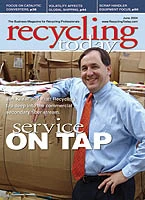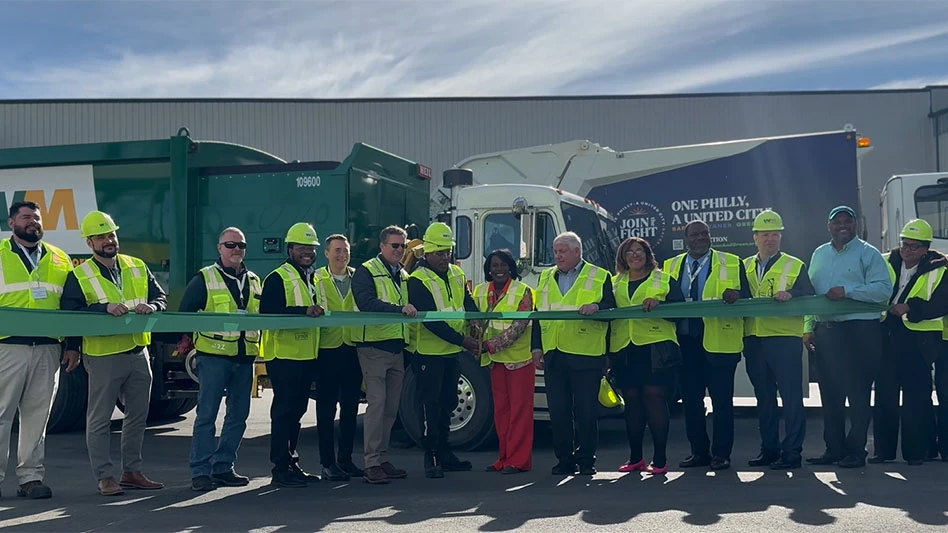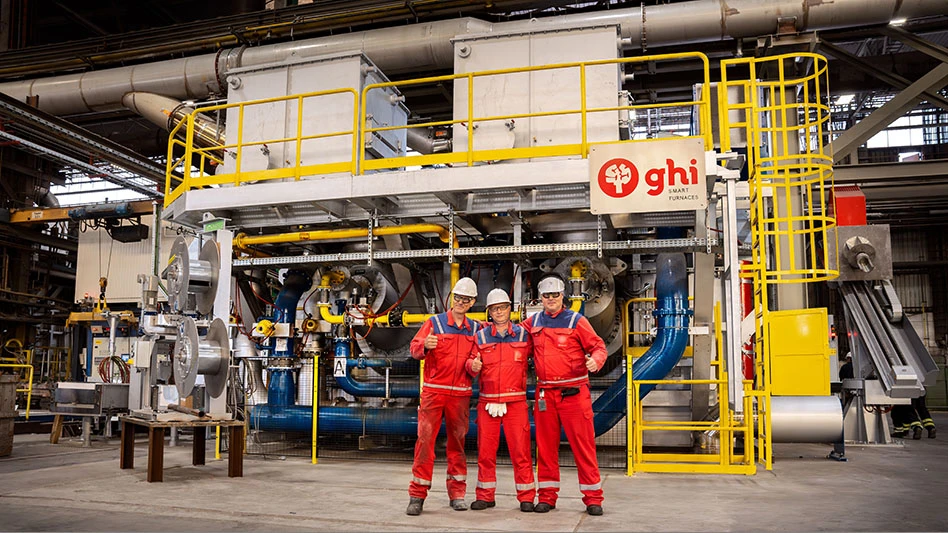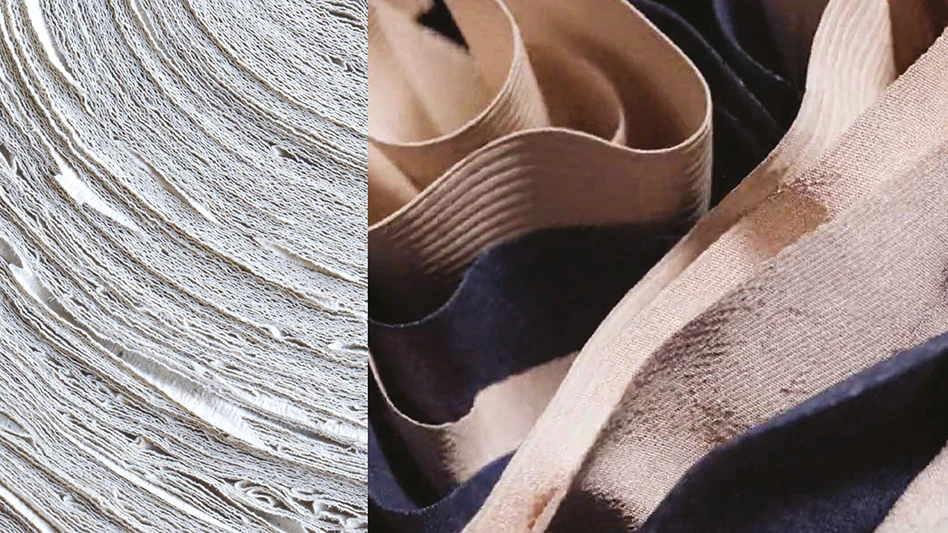It’s "steady as she goes" in the catalytic converter market. The scrap market for PGMs (platinum group metals) is intimately tied to the catalytic converter market. While mined output of basic materials and speculators play roles, it is the catalytic converter market that drives the recycling sector.
"We’re pretty steady," says Niel Shalit, CEO of Catalytic Converter Corp., Jamaica, N.Y. His firm deals mainly with recycling yards that produce 2,000 or more units per month.
Ashok Kumar, director of A-1 Specialized Services & Supplies Inc., the Pennsylvania-based multi-national recycler that specializes in lot consolidation and dry processing of salvage converters, says 2004 will end with global recycled production of platinum at 730,000 ounces, palladium at 450,000 ounces and rhodium at 120,000 ounces.
|
|
By year 2010, Kumar predicts these numbers will more than double, largely because of the sharply increased retirement of converter equipped cars in Western European countries.
TAKING INVENTORY. Jeff Couture, president of Prospera Metals Inc., Petrolia, Ontario, Canada, says he sees a lot of converters in the marketplace. Things really picked up in March and April. Prospera deals in Ontario, Quebec, Ohio and Michigan—areas that had a dreary winter.
"Most scrap yards were pretty lazy getting converters off the yard in January and February," Couture says. "In March and April we were much busier."
Couture says he thinks recyclers were even slower about moving material this winter than in previous ones. But as spring moved toward summer, things began hopping. "Business is strong," he says.
Roughly 10 percent of the world supply of PGMs comes from recycled catalytic converters, a figure that has grown steadily in the past quarter-century.
The impact of this increase in supply from recycling will vary. Since August 2001, the price for platinum has moved steadily up from $450 to $937, setting a 24-year high. The principal factor has been increasing platinum demand in Europe for diesel cars, which will make up 50 percent of the vehicles produced in Europe, Kumar says. Platinum is presently the only suitable metal for converters used with diesel cars. In 2000, automakers demanded around 1.9 million ounces of platinum.
In 2004, demand is expected to be 3 million ounces. Kumar says platinum will play a dominant role in the coming years. "The 2007 heavy-duty diesel emission standards in North America and the required reduction of sulfur content from the current levels by year 2006 program will introduce a new perilous outlook for platinum," says Kumar.
Palladium could experience an opposite run. Palladium saw an early April 2003 price of $148—a long way from a metal that was moving close to $1,100 a couple of years ago. By May of 2004, it had added $100 back to its price, but the first half of 2004 saw it struggling to break out of its bottom-feeding trough.
ACTIVE MINING. Oversupply has hurt palladium prices. The oversupply was because of a run-up in nickel prices. Miners, especially in Russia, saw nickel prices make a nice upward move and logically dug more nickel . . . thus extracting more palladium.
Palladium has been tracking at 30 percent of the price for platinum, selling around $300, and most observers say it should not experience a price shock.
"Producers understand and accept that palladium is not going to be at the $1,000 level again," says Kumar. "Perhaps it will remain as a couple-hundred dollar commodity."
| Over There |
|
Japan is the world’s second largest converter/catalyst supply market, but it may also be the most difficult market to enter. Its converter/catalyst lot consolidation and dry processing industry is dominated by a collaboration between one Japanese vehicle manufacturer, one Japanese platinum group metal fabricator/refiner and one smelter, Ashok Kumar, director of A-1 Specialized Services & Supplies Inc., Croydon, Pa., says. In the EU, supply-channel development lags that of the U.S. and Canada thanks to the comparatively late onset of the EU’s vehicle emissions control legislation. In addition, a large number of used cars find extended life in Eastern Europe. But the retirement rate of converter-equipped cars is growing, leading to converter/catalyst supply channels. Unlike the market in the U.S. and Canada, however, supply channels are organizing in a unique manner. EU legislation requires manufacturers to accept some of their retired vehicles for recycling free of charge. "It is widely expected that this legislative mandate will soon be extended and expanded retroactively to include all end-of-life vehicles," Kumar says. |
Worldwide mine production of palladium already exceeds the current total demand rate of about 4.5 million ounces. Total palladium supply in year 2006 will probably be around 7 million ounces, and the recycling industry itself will provide ample palladium starting in 2009, it is forecast. Palladium is strongly oversupplied, and usage of palladium will remain strong in the coming years,
Rhodium is hanging around the $800 mark, having settled back from a record $7,000 an ounce in the early 1990s.
In early May, spot prices for platinum hovered around $800 per ounce, palladium in the $250 range. Platinum was at $625 per ounce in early April 2003 and facing a spot price in the $680-$707 per ounce range—a 23-year high. Less than 15 months later, it was up another $200 per ounce. So much for records. And to think, back in 2002, the average platinum price was $540.03.
"I wish I could gauge the market," Shalit says. "For me, platinum is going up too fast." Like most firms, Catalytic Converter Corp. buys and sells on a daily basis. A steady price is better than one with leaps and bounds—either up or down.
Couture says that the higher prices for converters have drawn peddlers into the market—people offering a relative handful of converters. He says some buyers took advantage of the newcomers’ naiveté.
As the platinum market moved higher, some people were offering $57-$59 for GM (General Motors) style converters. "That is more than a GM converter is worth refined," Couture says. He says that some buyers were making up their loss on grade, accepting a handful at the high price but buying other converters as "regulars" and not premium items.
"If you want to get into the business in a serious way, you have to know the business," Couture says. "But it is hard to build a knowledge base, and it is a difficult business to learn." About 80 percent of the recycled material Prospera handles comes from scrap yards, the other 20 percent from muffler and exhaust shops.
THE MARKETS. Midas Muffler, Itasca, Ill., has 2,000 franchised and company-owned locations in the United States and Canada and more than 700 licensed and franchised stores in 17 other countries. Company spokesperson Bob Troyer says that the decision on recycling mufflers is left to each of the individual franchisees.
Federal regulations require muffler shops to retain all converters for a minimum of 15 days. This gives consumers time to file a complaint if they feel the mechanic took out a good converter and its replacement was not necessary.
"Otherwise, we recommend our shops follow the CCAR organization guidelines," Troyer says. CCAR (www.ccar-greenlink.org), the Coordinating Committee for Automotive Repair, is devoted to environmentally sound practices. The National Automotive Environmental Compliance Assistance Center is part of the CCAR initiative.
Sean Ochester, safety officer at CCAR, says converters must be marked to indicate from which vehicle the converter was removed. A properly marked converter contains the work invoice number or date of removal and the customer’s name written with a marker, chalk or an equivalent marking material; or a copy of the work invoice can be attached to the converter.
Another large generator of converters is Rochester, N.Y.-based Monro, which operates 595-company owned stores under the Monro Muffler Brake Inc. and the Speedy Muffler King chain names. In late 1998, Monro purchased the U.S.-located Speedy shops from Speedy Muffler King Inc. of Toronto. In March, it acquired 36 leased Mr. Tire locations from privately held Mile One Automotive. Most Monro shops are in the mid-Eastern region of the United States. They, too, harvest large numbers of converters.
In the U.S. and Canada, Kumar says, converter supply channels have become organized into loose networks of one-truck collectors, vehicle dismantling yards, scrap yards, re-buildable auto parts dealers, aftermarket converter manufacturers, used converter refurbishers and other lot consolidators. Each network is "managed" by a lot consolidating firm, which in turn supplies a smelter/refiner with the final PGM production steps. A lot consolidating firm holds its supply network together with credibility; inter-company relationships; and competitively attractive terms, conditions and ancillary service, Kumar says.
Some members of the converter/catalyst recycling industry now engage not only in physical collection and processing, with ISO certified product and environmental management, but also in extensive trading, including hedging and cross-hedging instrumentalities in the futures, options and physical markets. The industry now includes several large and not-so-large extractors and refiners of PGM (some of which are PGM mining firms), trading companies, commodities brokerages and vehicle manufacturers, Kumar says.
He says the influx and turnover among participants has always been high. Even though the industry has grown enormously, few of the large, early-entry firms remain as significant participants. The large precious metal fabricating firms have either departed the industry or have become marginalized.
Mining companies, smelting/refining companies and multi-yard scrap metal processing companies have largely retired, at least from the supply channel side of the business, if not from all parts of the industry or exist today as fringe participants.
Governments, however, see a need for continued recycling of PGM materials and want to assure players at all levels—auto owner, wrecker, scrap dealer, processor and metal buyer—that the game is conducted equitably.
STATE RECOMMENDATIONS. Many states have Web sites that steer mechanics to bona fide recyclers for disposal of catalytic converters. Recyclers can get on the list by contacting the proper person, usually in the state Environmental Protection Agency or the division which regulates the automotive and mechanic industries.
The Vermont Environmental Assistance Division, like other state agencies, recommends that crushers remove converters prior to crushing. Its advice is three-fold: use only reputable scrap dealers, keep weight slips for metal sent out to verify proper management and be sure to drain all filters (oil and transmission, mainly) before disposing of metal for recycling.
The Delaware Division of Air and Waste Management (DAWM) says catalytic converters should be removed from vehicles as soon as possible after a vehicle enters a dismantling facility. It also notes that converters are to be tested with federally-approved equipment if the units are to be resold. Converters that have not been tested and approved cannot be sold to the public, DAWM emphasizes. They note that most facilities find it more practical to recycle catalytic converters by selling them to core buyers or scrap recyclers.
Missouri’s Department of Natural Resources (MDNR) encourages dismantlers to recycle converters separately from other exhaust systems parts. The reason: a better price.
Although Missouri does not have environmental regulations dealing with waste mufflers or catalytic converters specifically, they must be handled so they do not become an environmental or public health hazard. "If you have a scrap pile, be sure it doesn’t become a dump," MDNR says. It offers a good incentive: Mistakenly recycling scrap converters as ordinary metal is likely to be a costly error.
DOWN THE ROAD. Shalit says he expects the market to continue on an even keel. "Figure that a fraction of all the cars made hits the shredder every day," he says. "We get our recovery from that number."
Although there have been very large changes in individual PGM metal prices over the past decade, the aggregate price of the combination of metals used in catalytic converters, and recovered from them, has generally trended upward.
Kumar says individual platinum, palladium and rhodium price excursions were almost always out of phase, with one or two of the three metals ascending, balanced by one or two declining.
Kumar agrees with Shalit that automobile wrecking yard operators never stop removing converters from scrap vehicles. "They may hold back their supplies to wait for a price increase, but the supply of PGMs from the converter/catalyst recycling industry never stops," he says.
Although the price for GMs slipped into the mid-40s in May, movement of the material remains consistent.
Couture sees a market that will continue quite strong right through the fall. Like others, he notes that from 11 to 12 million vehicles will be scrapped in the U.S. and another 1 to 1.5 million will be scrapped in Canada. That represents only flow through dismantlers and dealers, not muffler shops. "That’s quite a bit of material," he says.
Recycling of converters for platinum, palladium and rhodium has become a major factor in worldwide PGM supply.
"It will increase in importance in coming years," Kumar says. There are influences in many directions: the interplay of country-by-country emission standards, evolving catalyst technology, evolving engine and other vehicle technologies, growing global vehicle population and growing vehicle/catalytic-converter lifetimes, on one hand could extend PGM product life and, on the other hand, could create more intense PGM utilizations.
"But the overall trend will be toward increase use of PGMs in the automotive industry, and increased recovery," Kumar concludes.
The author is a Recycling Today contributing editor based in Cleveland. He can be contacted at curt@curtharler.com.

Explore the June 2004 Issue
Check out more from this issue and find your next story to read.
Latest from Recycling Today
- ReElement, Posco partner to develop rare earth, magnet supply chain
- Comau to take part in EU’s Reinforce project
- Sustainable packaging: How do we get there?
- ReMA accepts Lifetime Achievement nominations
- ExxonMobil will add to chemical recycling capacity
- ESAB unveils new cutting torch models
- Celsa UK assets sold to Czech investment fund
- EPA releases ‘National Strategy to Prevent Plastic Pollution’






